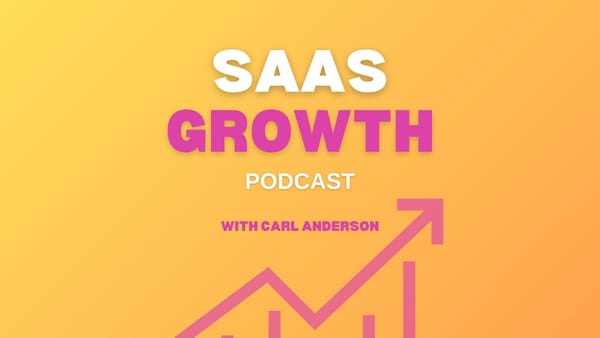Leveraging User Feedback Loops to Drive Continuous SaaS Product Improvement
Introduction: The Vital Role of Feedback in SaaS Success
In the fast-paced world of SaaS, success hinges on understanding what users truly want. User feedback is not just a box to tick; it is the lifeblood of any thriving SaaS product. Imagine building a product without knowing if it meets your users' needs. With structured feedback loops, you can not only refine your offerings but also accelerate growth and enhance product quality. Closing the loop between your users’ insights and your team’s actions creates a powerful dynamic that fuels innovation and drives your SaaS to new heights.
Understanding Feedback Loops: Types and Stages
Before diving into how to collect user feedback, it’s crucial to grasp the concept of feedback loops. At the core, feedback loops consist of collecting insights, analyzing them, and implementing changes. There are two primary types of feedback: qualitative and quantitative. Qualitative feedback involves open-ended responses that provide depth, while quantitative feedback is numeric and reveals trends. Understanding the intersection of these two types can provide a fuller picture of user sentiment.
The typical stages of a feedback process in SaaS are straightforward: collect, analyze, implement, and evaluate. Each stage plays a critical role in ensuring that the voice of the customer is heard and acted upon.
Tactics for Collecting Actionable User Feedback
So, how do you gather this invaluable feedback? Here are several tactics to ensure you’re not just collecting data but actionable insights.
- Surveys: Online surveys allow you to design tailored questions that target specific aspects of the user experience. Make them concise yet informative to maximize response rates.
- In-App Tools: Implementing feedback widgets within your application encourages users to share their thoughts on-the-spot, enhancing the relevance of the data collected.
- Interviews: Directly speaking with users provides context that surveys often can’t capture. It allows for in-depth discussions about pain points and desired features.
- Analytics: Tools like Google Analytics reveal user behaviors and interactions. Understanding what features users engage with—or neglect—can guide improvements.
- Customer Support Interactions: Leverage support tickets and chats as rich sources of feedback. Analyzing common issues can help identify widespread pain points.
For all these techniques, best practices like timing, clarity of questions, and follow-ups can significantly increase engagement and insight extraction.
Integrating Feedback into the Product Development Cycle
Collecting feedback is only half the battle—the next step is integrating it into your product development cycle. Here’s how to do that effectively:
- Incorporate Feedback into Roadmaps: Align your product roadmap with user feedback, prioritizing features and fixes based on direct input from your users.
- Prioritize Wisely: Not all feedback is equal. Establish a system for categorizing and ranking feedback to focus on changes that will have the most significant impact.
- Cross-Functional Collaboration: Ensure that engineering, product management, and customer-facing teams are in sync regarding feedback. Regular meetings to discuss insights can bridge communication gaps and foster a unified approach to development.
Continuous Experimentation and A/B Testing Based on Feedback
User feedback should be the foundation of your experimentation culture. Use feedback to inform your testing strategies and let the data guide you. Implementing A/B tests allows you to measure how changes based on user insights impact user desires, engagement, and retention.
- Feature Flagging: This tactic lets you gradually roll out new features based on user segments, ensuring that only a subset of users experiences changes initially. This not only minimizes disruption but also allows you to refine features based on real-world usage before a full-scale launch.
Establishing a data-driven approach for product development is not just about the tests you run, but also about fostering a culture where insights shape decision-making. Encourage your team to see failures as opportunities to learn and iterate.
Leveraging Feedback for Marketing and Customer Success
User feedback doesn’t just improve products; it also strengthens marketing strategies and customer success initiatives. Positive user testimonials can be powerful hooks in your marketing campaigns, enhancing credibility and attracting new users.
Additionally, insights gained from user feedback can refine onboarding processes, making them more effective and thus reducing churn rates. Essentially, you’re turning satisfied users into advocates. Use their feedback to develop case studies or promotional content that resonates with your target audience, creating a community of brand champions.
Building Scalable Feedback Systems for Growing SaaS Businesses
As your SaaS business scales, so too should your feedback systems. To avoid diluting insights as your user base grows:
- Automate Processes: Utilize tools for feedback collection that can handle scaling efficiently. Automation helps ensure that you keep collecting valuable insights without overwhelming team members.
- Frameworks for Feedback Gathering: Create structured frameworks that define how feedback is collected, analyzed, and integrated, maintaining consistency in how you handle user insights.
Implementing a scalable feedback system allows you to continue improving your product in line with user needs, regardless of the growth in user numbers.
Common Pitfalls and How to Avoid Them
It’s essential to be aware of common missteps that can hinder your feedback efforts:
- Bias Towards Negative Feedback: Make sure to celebrate both positive and negative feedback, as overlooking positive insights can skew your understanding of user sentiment.
- Misinterpretation: Always take the context of feedback into account. Engaging in discussions around feedback can help ensure accurate interpretations.
- Failing to Close the Feedback Loop: Failing to inform users about how their feedback has influenced product changes can lead to disengagement. Keeping users in the loop fosters trust and involvement.
Case Studies: SaaS Growth Through User-Driven Iteration
Many successful SaaS companies showcase the power of feedback loops:
- Slack: Continuous feedback during early years helped mold Slack's features based on what users loved the most.
- Dropbox: The company implemented a robust feedback system that allowed them to adapt features based on real-time user input, leading to massive growth.
- Trello: Using feedback to prioritize user-requested features allowed Trello to remain relevant and embraced among various teams and organizations.
These case studies illustrate not just the power of feedback loops, but the exponential benefits they can yield when integrated thoughtfully into business operations.
Conclusion: Embedding Feedback-Driven Growth in SaaS DNA
Feedback loops are not just a tool; they should be a foundational aspect of your SaaS company's culture. To foster ongoing improvements, relentless experimentation, and innovation, place user feedback at the center of your strategic initiatives. The insights gained can guide every decision, from product development to marketing strategies, ultimately crafting a product that resonates deeply with your target audience.
 Carl Anderson
Carl Anderson




